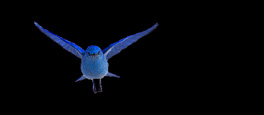
|

|
|
|
|
Peter A DettlingPeter Dettling ist ein Schweizer Naturfotograf, der regelmässig Wolfe beobachten. Inzwischen hat er vier Buche über Wolfe und andere große Tiere veröffentlicht. Während seiner Reisen nach Kanada, Yellowstone und der Schweiz hat er wertvolle Erfahrungen entwickelt, die es ihm ermöglichen werden, einen großen Wolfsfamilie in der Nähe zu beobachten. So hat er für die Schweizer Fernsehen den Dokumentarfilm ONCE AROUND THE SUN WITH THE CALANDA WOLVES produziert. The Will of the LandIn a world that is increasingly fragmented, a theology of the land reframes a biblical understanding of the world and how humans interact with it. It challenges the notion of exclusive ownership of the land and instead promotes a relationship with the world that honours the holy creator, whose call is for reconciliation to God, self, and neighbour. Peter A. Dettling (born October 15, 1972 in Sedrun, Switzerland) is a Swiss-Canadian nature photographer, painter and author specializing in the documentation of wildlife and natural habitats. His images have won numerous awards and are regularly published in international print outlets and major media such as Malik/National Geographic, Maclean’s, Outdoor Photography Canada and SRF/Swiss Radio & Television. Together with Stefan Borkert, verantwortungsvoller des Schweizer Wolfmagazines Wolfsspur>>, ATN organisiert ein spezielles Studienreise für unsere Schuler und Absolventen in den altesten Nationalpark der Welt, Yellowstone. Hier lernen sie gemeinsam mit dem berühmten Schweiz-Kanadischen Wolfsexperten kennen und die einzigartige Welt von Wolven beobachten. The Ghosts of the ForestWhen Trey Anastasio announced a new project called Ghosts of the Forest in late December, Phish fans waited with bated breath. This was the guitarist’s first solo band project in a decade, and the eight-show run sold out instantly. The music was a deeply personal tribute to the passing of Anastasio’s friend Chris Cottrell and the life-threatening illness of his bandmate Ray Paczkowski. While the group’s psychedelic guitar liftoffs, ambitious arrangements and emotional lyrics drew comparisons to Broadway shows and symphony orchestras, it was unlike anything Anastasio has ever done. While improvisation has always been a central element of Phish’s musical landscape, the band rarely kept to a fixed sequence on stage during its Baker’s Dozen run in April 2019. With Ghosts of the Forest, however, Anastasio set out to create a one-night-only experience anchored by a fixed sequence of songs. The result was a powerfully moving and eloquent exploration of the human condition. The Wolfs of Yellowstone National ParkWhen wolves were eradicated in Yellowstone National Park in the 1920s, more than just a noble predator was lost. The ecosystem changed dramatically, and when wolves returned in the 1990s, their reintroduction allowed biologists to study what happens when a top predator is added back into an ecosystem. Wolves brought balance to the herds of elk, reducing overpopulation and keeping populations in check; they helped to restore beaver colonies and provided habitat for muskrats, herons, ducks, rodents, reptiles, and fish. And they reshaped the physical landscape of Yellowstone, stabilizing riverbanks, encouraging vegetation growth, and preventing soil erosion. As Peter Dettling observes on our Wolf Watching Tour in Yellowstone, these changes are making a difference. His photographic and fieldwork efforts provide insight into how wolves establish territory, hunt, and interact with one another. He also has made new discoveries about wolf genetics, including how they determine coat color and what makes them black or gray. His insights have contributed to a better understanding of the world of wild wolves and are a crucial part of his latest book,,,Wolfsodyssee”. The Wolfs of the Swiss AlpsAfter being hunted to extinction in Switzerland and throughout much of Europe at the turn of the 20th century, wolves have made a shy comeback. Their population has risen from just a few animals in 1995 to about 200 individuals spread across 25 wolf packs today. Wolves have a strong territorial defence system. Their home range is usually around 50-300 km2, depending on the availability of prey. As soon as they enter a new territory, wolves will mark it with scent and urine, and set up patrols to watch for intruders. This way they can warn neighbors of potential threats. Wolves are protected in Switzerland, but cantonal wildlife officers can authorize the killing of problematic wolves on a case by case basis. Farmers often object, arguing that the predators kill livestock and need to be eliminated as quickly as possible. This is a growing source of conflict between humans and nature. |
|